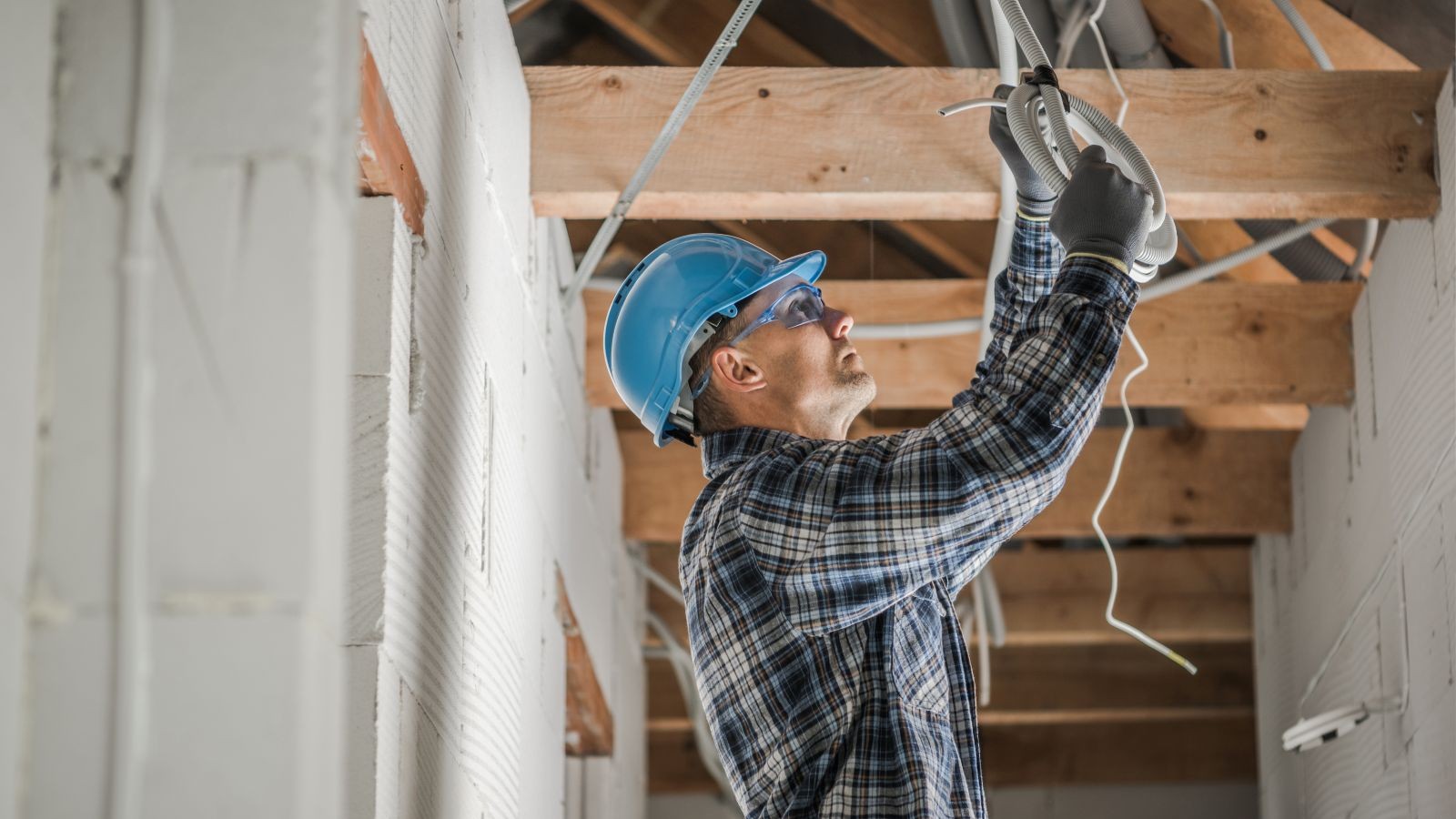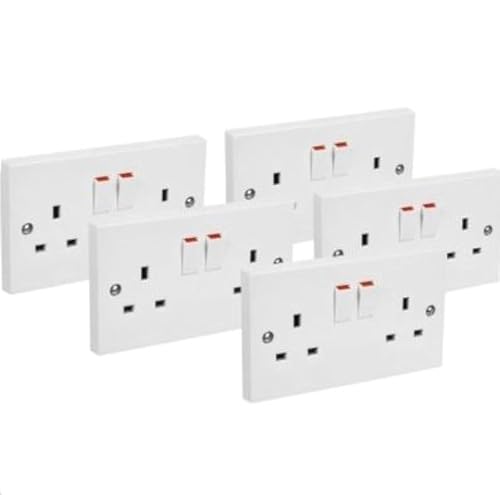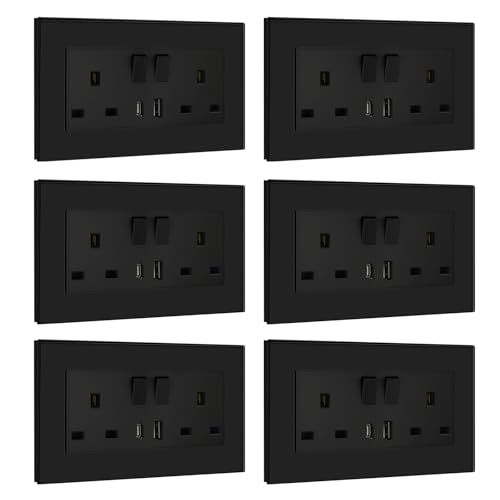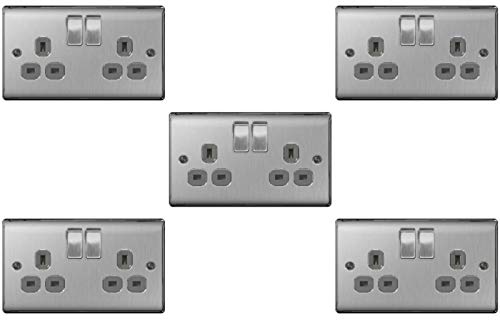When you’re building or renovating a home, it’s easy to get caught up in the big decisions – floorplans, windows, kitchens – but an area that shouldn’t be overlooked is electrical safety. That’s exactly where Approved Document P, or Part P of the Building Regulations comes in.
Part P of the Building Regulations deals with the safety of electrical installations. It explains how to ensure that the people who live in, or use your home, are protected from the risk of electric shock or fire caused by faulty wiring or poor-quality work.
In a nutshell, Part P requires that all electrical installations in our homes, gardens, or outbuildings are designed and installed to a safe standard. This includes much more than the visible bits, such as sockets, switches and light fittings, but everything hidden behind walls, under floors and above ceilings, such as electrical cable and control equipment.
What exactly does Part P cover?
Part P applies to all electrics, whether that’s installing a new circuit, modifying existing wiring, or upgrading electrical fittings or equipment.
It doesn’t just apply to full rewires or major alterations. Even relatively minor work, such as installing a new socket in a kitchen or adding a light to a bathroom will fall under its remit, especially if they’re in so-called ‘special locations’ where the risk of shock is higher such as kitchens, bathrooms and outdoor spaces.
Electrical safety requirements in dwellings
Part P sets out the legal requirements, and closely references British Standard BS 7671, the national standard for electrical installation in the UK. This is sometimes referred to as the “Wiring Regulations” and is the rule book that all local electricians follow. Here’s some of the key areas to comply with:
- Safe wiring zones: Cables buried in walls must follow predictable routes, typically vertically or horizontally from sockets or switches, to reduce the risk of accidental damage when drilling or nailing. There are also safe zones of 150mm off the top of the wall, or in the corners of rooms. These zones help to identify the likely location of cables, thereby protecting occupants when say hanging pictures, or drilling holes.
- Cable sizing: A key requirement of Part P is to ensure that cables don’t overheat and become a fire risk. Cable size must match the expected current load, installation method, and length of the run to ensure adequate performance and safety. Its vital that cable sizes or not mixed up, and typically, lighting circuits will require 1mm to 1.5 mm cable whereas electrical sockets will need 2.5mm cable. Mixing these up could lead to cables overheating.
- Circuit protection: Another key requirement, which is essential for electrical safety in the event of something going wrong, is the use of residual current devices (RCDs) and circuit breakers. These devices automatically disconnect the power in the event of a fault, helping to prevent injury or fire. RCDs in particular are vital for circuits supplying sockets, especially in locations such as kitchens where the risk of electric shock is higher. Similarly, proper earthing and bonding is also needed to prevent metal parts of an installation becoming live in a fault condition.
- Electrical fittings: Electrical fittings must be protected from water ingress, especially in designated ‘special zones’ such as bathrooms and kitchens. Equipment is rated using an IP (Ingress Protection) code, and installations must follow the zoning rules e.g, only certain fittings are permitted within certain bathroom zones, such as showers or above baths. The position of sockets and switches must also be considered and outlets should typically be 450 – 1200mm above floor level in new dwellings, and kept clear of splash zones and heat sources.
Shop plug sockets
How to comply with Part P
The easiest and most reliable route is to use a registered electrician who belongs to a government-approved Competent Person Scheme such as NICEIC, NAPIT, and ELECSA. These schemes ensure that electricians are qualified, up to date with regulations, and capable of carrying out electrical work safely.
If you’re designing a new home, a registered electrician is competent to advise on load requirements, circuit layout, lighting zones, as well as the IP rating of fittings and the necessary control equipment to keep the system compliant and safe. For renovations, they’ll be able to assess the condition of your existing wiring and let you know what needs upgrading. It’s not uncommon for older homes to have outdated electrical systems and wiring that no longer meet modern safety standards, so don’t be surprised if a small job turns into a bigger discussion about rewiring or costs of replacing the consumer unit.
Whatever electrical work is being carried out, an electrical completion certificate should be issued to test the circuits and prove that the work was done properly and complies with the regulations. You’ll need it if you ever sell your home, remortgage, or make an insurance claim to prove the work was done properly by a competent person.
It’s important to note that a registered electrician can self-certify their own work, which means they don’t need to involve the local authority’s Building Control department. They’ll provide you with a certificate once the job is complete to confirm that the work meets the requirements of Part P and BS 7671.
Carrying out notifiable electrical work without using either a registered electrician, or notifying Building Control first, is actually a criminal offence. The local authority can also require the work to be redone by a competent person, and there’s the possibility that you could be fined for breaking the law.
1) Notifiable work
Not all electrical work is treated the same under Part P. Some work is deemed notifiable, which means it must either be carried out – or at least signed off – by a registered electrician, or be inspected by Building Control. Typical notifiable works include the installation of a new consumer unit (what most of us call a fuse box), the addition of new circuits and any electrical work carried out in a kitchen, bathroom, or outdoors.
Suppose you’re having a new kitchen, and as part of this, new sockets and lighting will be installed. This electrical work would likely be notifiable under Part P, especially if it’s close to water or involves new wiring. Similarly, if you’re building a garden room for a home office, and want to run power out to it for lighting, sockets, and maybe even heating, this would also be notifiable work. Other notifiable projects would be upgrading a consumer unit.
An installation that’s becoming more frequent is the installation of EV charging points and air source heat pumps. These are now classified as notifiable work, partly because they draw a significant amount of current, and must be installed with dedicated circuit protection in place to prevent overloads or faults. A registered electrician will know the latest rules around this, including any special considerations about the earthing arrangement.
Outdoor installations need to be treated with extra care. Wiring for garden lighting, water features, or hot tubs must be properly protected from the elements and from mechanical damage. You might be tempted to run a cable through a window or use an extension lead from the house, but this kind of temporary solution isn’t just unsafe – it’s very likely a breach of Part P.
2) Non-notifiable electrical projects
However, not all electrical jobs have to be done by a registered electrician, and you’re allowed to carry out some non-notifiable work yourself, provided you’re competent to do the work. This usually includes replacing an existing light fitting or swapping a faulty socket. But remember, electricity can kill, so you must know what you’re doing, and the work must still meet the same safety standards. Just because a job isn’t notifiable doesn’t mean it can be done badly or unsafely.
Complying with Part P doesn’t have to be a burden. If you use a competent electrician, get the right certifications, and involve Building Control where necessary, compliance is straightforward. In fact, most people find the biggest challenge is simply knowing where the dividing line is between what’s notifiable and what’s not. That’s why it’s always a good idea to use an electrician registered with recognised scheme. You can check their credentials easily online using the Competent Person Register.
Ultimately, Part P exists to keep people safe. Electricity is dangerous and if not handled properly, the consequences of getting it wrong can be serious – fires, electric shocks, even deaths are very real risks. But, by working with competent professionals, and complying with the regulations, there’s no need to worry.
So, whether you’re rewiring an entire home or just adding a few spotlights to your bathroom lighting, make sure you’re thinking about Part P, to stay compliant and keep your family safe.
View the original article and our Inspiration here





Leave a Reply